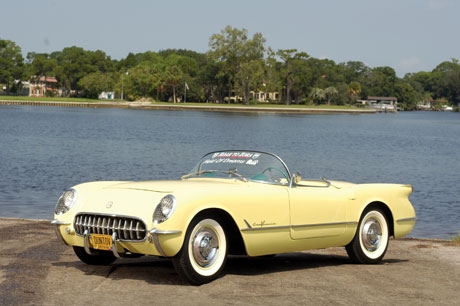Inspiration for the introduction of the 1953 Chevrolet Corvette was attributable to a flood of young Americans arriving home after World War II who craved nimble, athletic sports cars.
A team of General Motors engineers, under the leadership of Harley Earl, set about creating a car bodied in fiberglass, with enough appeal to compete with Europe’s best MGs and Jaguars.
The outcome was a Chevrolet powered by a modified GM 6-cylinder engine that was lavishly displayed on a revolving centerpiece at the 1953 Motorama in New York. It was a tremendous success—over 300,000 people admired the Corvette during its first weekend in New York and collectively spent a reported $800,000 on GM products.
One of the many Motorama attendees was Zora Arkus-Duntov, an accomplished Belgian-born engineer and racing driver, who later submitted a letter to Chevrolet’s chief engineer, Ed Cole, requesting the opportunity to work on the Corvette’s development. He was hired and rose through the ranks to become a director of high-performance programs, a proponent of early fuel-injection projects, and founder of the Grand Sport project, among other undertakings. His contributions were so great that despite the fact he was not responsible for its initial design, Duntov is often termed the “Godfather of the Corvette.”
Although the specifics of its genesis are clouded in mystery, this particular Corvette was first owned by Mr. Duntov himself. It was officially titled as a “1956 Assembled Corvette,” as it was apparently one of two 1956 prototypes built upon a 1956 chassis with a 1955 body. It was presented to Duntov, although it is unknown whether he paid for the car or received it as a gift. Finished in silver with a blue center stripe, it was outfitted with a fuel-injected 283-ci V8, along with various newer features, including the steering wheel, dash instrumentation, hub caps, rearview mirror, and shift console. Interestingly, Mr. Duntov’s wife, Elfi, was the car’s primary driver, as it was registered in her name.
To a large degree, Zora Arkus-Duntov was responsible for Chevrolet’s recognition of its performance-minded youth market. Well-documented and boasting a remarkable provenance, this is, quite simply, one of the most significant early Corvettes ever assembled.

